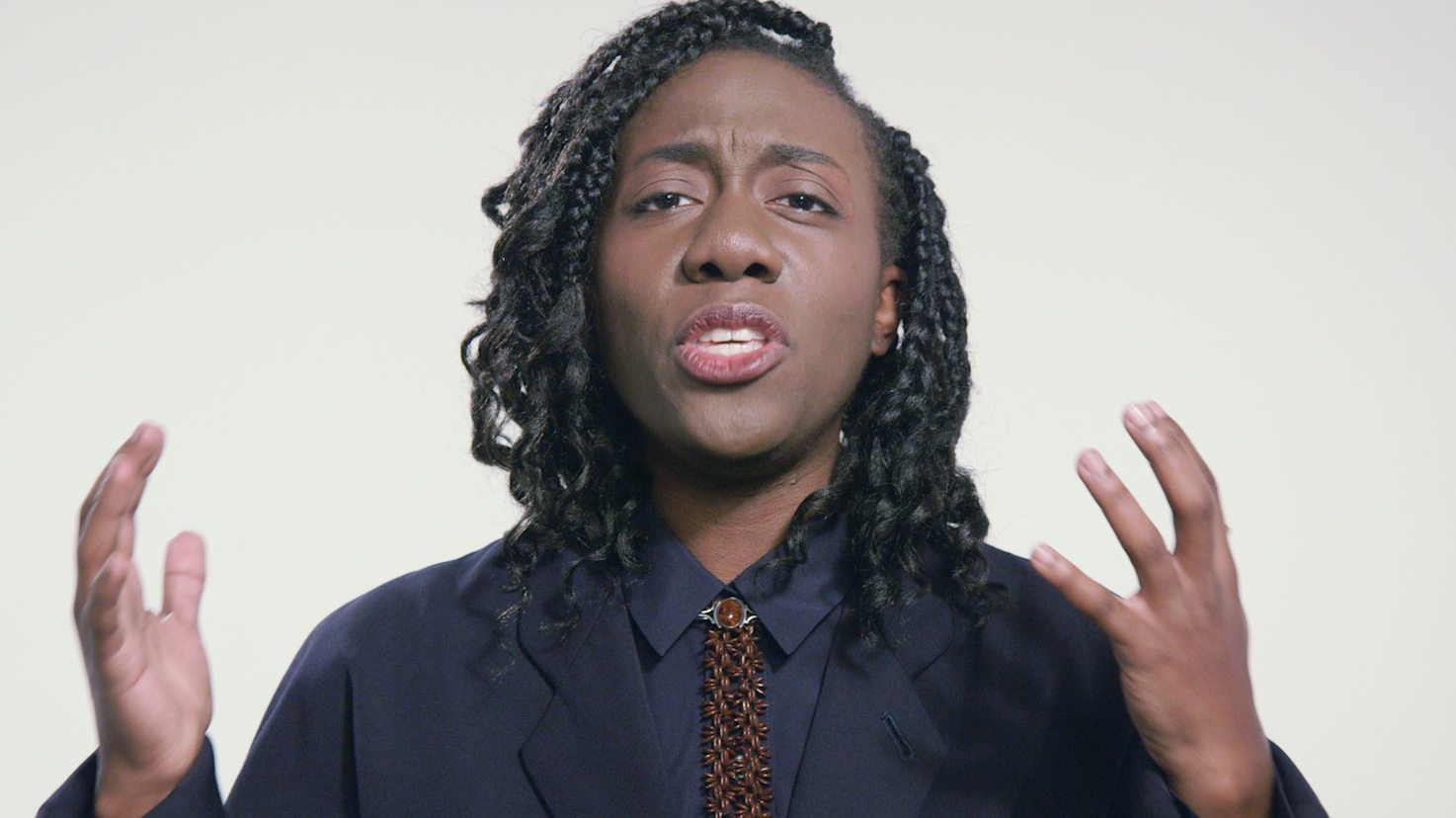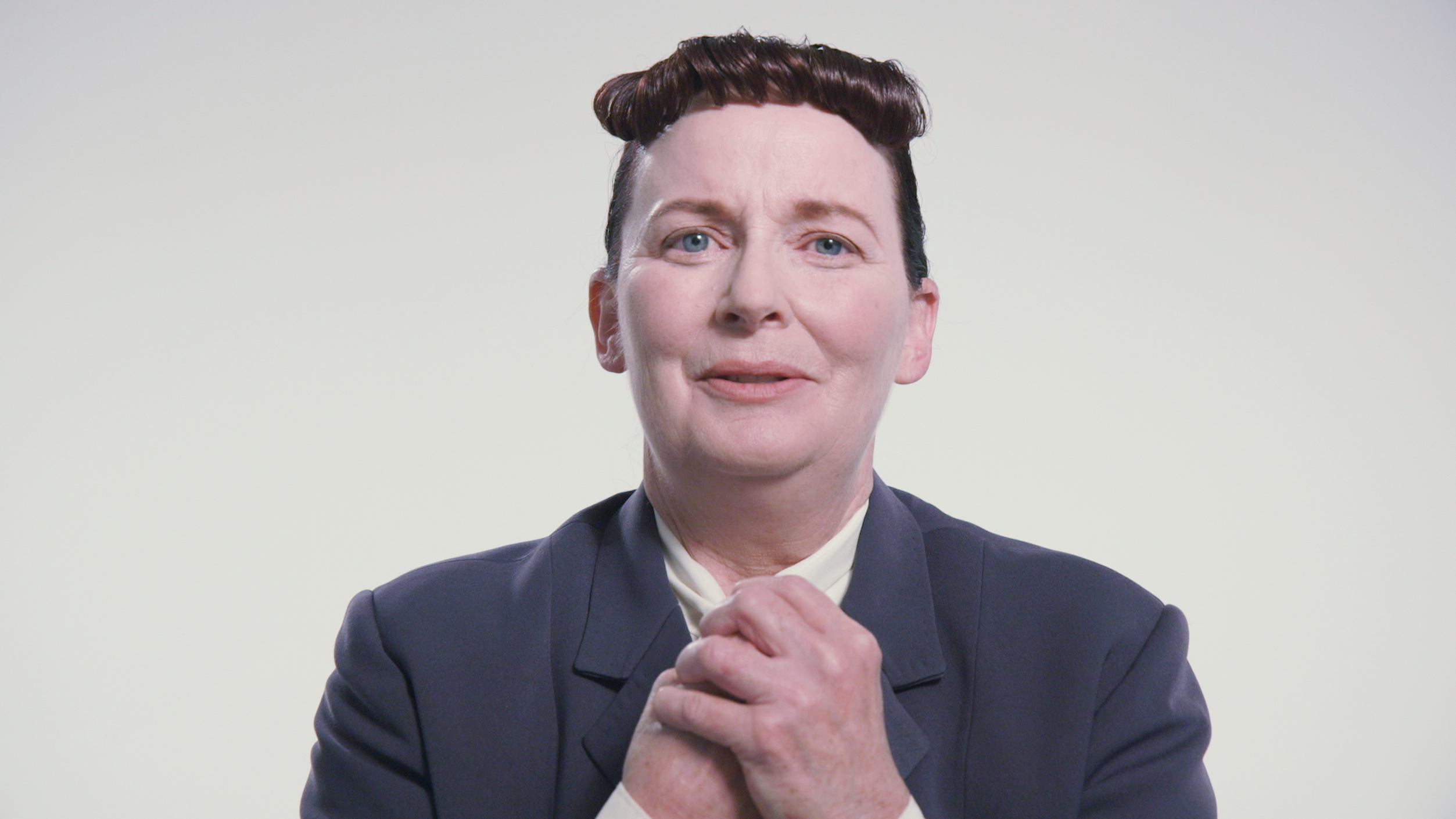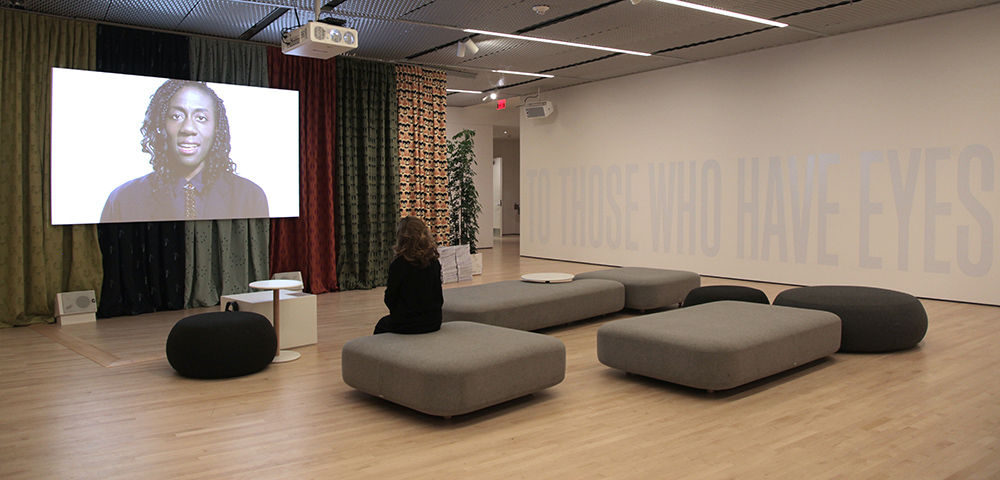Manifest features alternating clips of two performers who directly address the camera from an empty white space. Commissioned by the San Francisco Museum of Modern Art, the video stems from Geyer’s research into the establishment of the museum, in particular into founder Grace McCann Morley and her belief in museums as integral to civil society and civic life.
An advocate for modern art and cultural democracy, Morley was a staunch supporter of the diverse art community in the San Francisco Bay Area, as well as of the broader avant-garde movement throughout the Americas. From its inception in 1935, the San Francisco Museum of Art (later renamed San Francisco Museum of Modern Art) pursued a dynamic outreach and education program, involving church, labor, and Boy and Girl Scout groups. Under Morley’s direction, the museum was open until 10 p.m. As a result of these efforts, it garnered a following that was diverse and expansive. Morley wrote in 1950, “Art is an inseparable and essential part of human life.”
Styled after Morley—with her hair pulled back tightly except for a ring of curled bangs along her forehead—the first performer in the video wears simple makeup and a formal suit evocative of the 1930s. The second is younger and wears minimal makeup and contemporary clothes—a smart suit, punctuated by a jeweled tie; her hair is stylishly braided. They take turns declaring their wants, needs, and demands from museums. Each performer delivers the same lines at different points so that we might consider how their subjectivities inflect the resonance of their demands. Their declarations and requests range from the practical (“I want a museum to be open until 10 p.m.”) to the ideological (“I want a museum to transpire prejudice as a predicament of privilege”), and from the personal (“I want the museum to welcome my smell, my noise, my inadequacy, my struggle”) to the abstract (“I want a museum to eclipse banality”).
The script for Manifest draws from writings and lectures by Hannah Arendt, Walter Benjamin, Michel Foucault, and Morley, as well as from those by more recent thinkers such as Wendy Brown, Jack Halberstam, and Fred Moten. Geyer also included references in response to the 2016 presidential election (which took place while Geyer was making the work) that called for museums to be sites of resistance and sanctuary.
Credits:
Performers: Jenny Bass and nicHi Douglas
Direction, Edit, Script: Andrea Geyer
Script sources: Grace McCann Morley, Fred Moten, Jack Halberstam, Walter Benjamin, Michel Foucault, Linda Tuhiwai Smith, Hannah Arendt, Doug Ashford, Wendy Brown, and Ian White
Director of photography: Martina Radwan
Sound: John Steadwell
Production management: Sage Donahue
Hair and makeup: Arielle Williams
Crew: Anna Parisi, Catherine Fenton Bernath, Daniel Llaría Gaspar, Nina Macintosh, Paulina Kim, Rebecca Ou, Sareh Imani, and Tianyu Qiu


